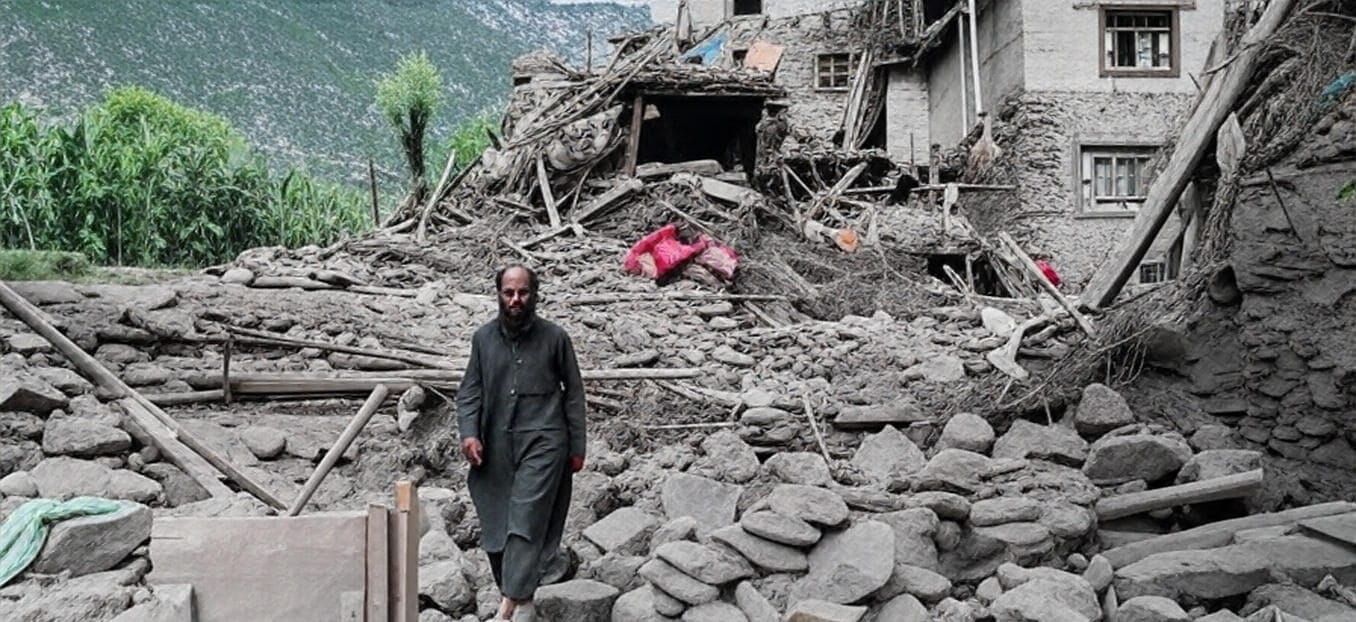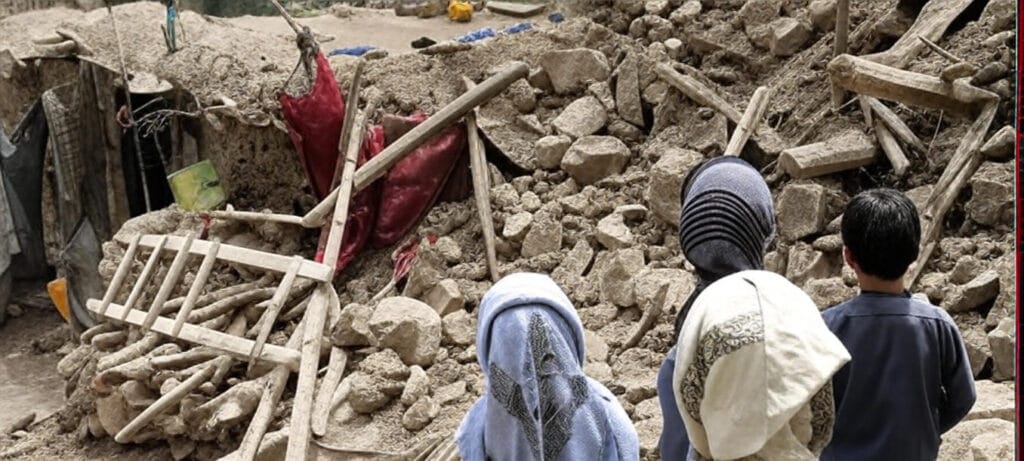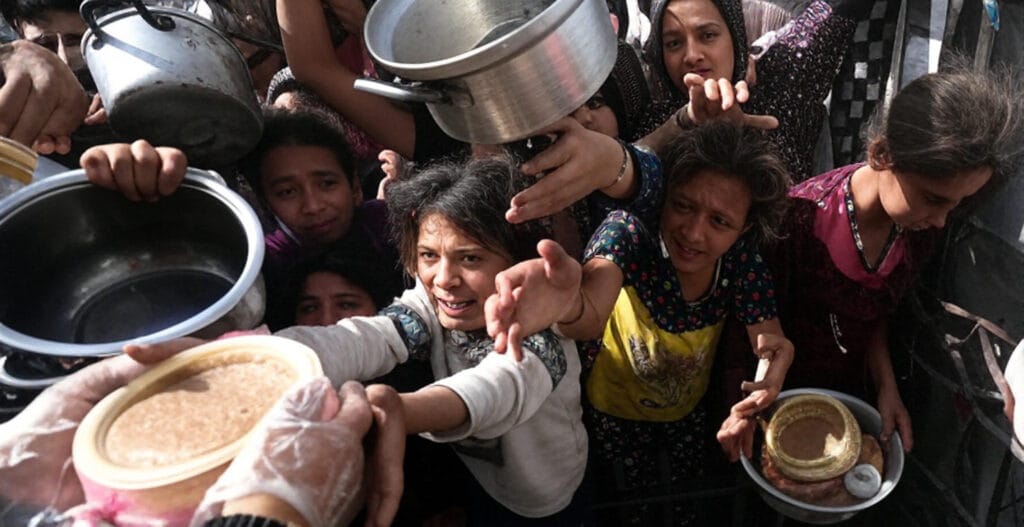
A catastrophic 6.0-magnitude earthquake struck eastern Afghanistan, claiming over 1,400 lives and injuring more than 3,000. Centered in the remote Kunar province, the disaster has devastated communities, flattening homes and infrastructure. Rescue teams, including air-dropped commandos, are battling treacherous conditions to save survivors. This article examines the earthquake’s toll, the complexities of relief operations, and the urgent need for global support.
Devastation Across Eastern Afghanistan
The earthquake struck in the dead of night, its epicenter near Asadabad in Kunar province, at a shallow depth of 7 kilometers. This amplified its destructive force, reducing villages to rubble and triggering landslides across the region. Mud–brick houses, which are often found in rural areas, collapsed right away, trapping families under the rubble. The shaking moved through Nangarhar and Logar provinces, making the power and communication systems stop working.People who survived are in a bad situation, with many without homes and facing very cold weather. Important places like local markets and schools, which are key to daily life, are destroyed.The loss of livestock and crops threatens food security, compounding the region’s economic fragility. The psychological impact is profound, as families mourn loved ones while grappling with uncertainty.
Obstacles to Rescue Operations
Rescue efforts are underway but face significant hurdles. The mountainous terrain of eastern Afghanistan, combined with recent heavy rains, has rendered many roads impassable. Landslides have buried access routes, forcing teams to rely on helicopters for transport. Commandos, trained for high-stakes missions, are being air-dropped into remote areas to search for survivors, but time is critical as aftershocks continue to destabilize the region.
Hospitals in Jalalabad and nearby towns are overwhelmed, with limited beds, medical supplies, and staff to treat the influx of injured. The risk of waterborne diseases is rising due to contaminated water sources, adding urgency to relief efforts. Despite these challenges, local volunteers and emergency responders are working tirelessly to provide aid.
- Treacherous Terrain: Mountainous landscapes and landslides block access routes.
- Strained Healthcare: Hospitals lack resources to treat thousands of injured.
- Ongoing Aftershocks: Tremors endanger rescuers and destabilize structures.
- Urgent Supplies Needed: Survivors require food, water, and warm shelter.
- Disease Risks: Contaminated water threatens outbreaks of illness.
Coordinated Humanitarian Response

The Afghan government, supported by international partners, has mobilized a robust response.Military helicopters are bringing food, blankets, and medical supplies to villages that are cut off from the rest of the country. The Afghan Red Crescent is creating temporary places for people to stay, and they are making sure that children and older people get help first.Community leaders are organizing relief centers to distribute essentials and provide emotional support to traumatized survivors.
International Aid Contributions
Global support is pouring in to bolster Afghanistan’s efforts. The United Kingdom has committed £1.5 million in emergency funding, supporting mobile clinics and temporary housing. Canada and Australia have pledged additional resources, focusing on clean water initiatives and sanitation facilities. The United Nations has launched a $60 million appeal to assist 120,000 affected individuals, emphasizing the need for swift and coordinated action.
International NGOs are deploying disaster experts to streamline logistics and ensure aid reaches the hardest-hit areas. These efforts are critical in a country already strained by economic hardship and reduced foreign aid following years of conflict.The world‘s reaction shows how quickly we need to deal with this humanitarian problem.
Rebuilding a Shattered Region
The path to recovery will be arduous. Reconstructing homes, schools, and roads requires significant investment, which Afghanistan’s economy struggles to support. The destruction of agricultural assets threatens long-term food security, with farmers facing the loss of entire harvests. Temporary subsidies for seeds and tools are under consideration, but sustained funding is needed to revive rural livelihoods.
Strengthening Disaster Preparedness
Afghanistan’s location on multiple fault lines makes it prone to earthquakes, as seen in previous disasters in 2015 and 2022. This crisis highlights the need for improved building standards, particularly in rural areas where traditional construction methods are vulnerable. Investing in early warning systems and training local responders could mitigate future losses. International donors are urged to prioritize these measures to enhance resilience.
Community Strength and Resilience

Amid the tragedy, stories of courage are emerging. In one village, residents used makeshift tools to free neighbors trapped under collapsed homes.A local imam turned his mosque into a shelter, offering shelter and meals to families who had been forced to leave their homes. These acts of solidarity reflect the resilience of Afghan communities, even in the face of overwhelming loss.
Addressing Mental Health Needs
The emotional toll of the earthquake is significant, particularly for children who have witnessed destruction and loss. Humanitarian agencies are deploying counselors to offer trauma support in relief camps. Community–based programs help people heal by supporting survivors in regaining their sense of safety and feeling hopeful about the future.
A Call for Global Solidarity
The Afghanistan earthquake demands sustained international attention. Immediate relief is critical, but long-term recovery depends on ongoing support. Donations to trusted organizations, such as the Red Crescent or international NGOs, can provide life-saving resources. Advocacy for increased funding and awareness campaigns can keep the crisis in focus, ensuring survivors are not abandoned.
In conclusion, the 6.0-magnitude earthquake has left eastern Afghanistan reeling, with over 1,400 lives lost and thousands injured. Rescue operations, supported by global aid, are working against immense challenges to save lives. By addressing immediate needs and investing in resilience, the international community can help Afghanistan recover and prepare for a safer future. The strength of its people, combined with global solidarity, offers a path forward through this tragedy.





